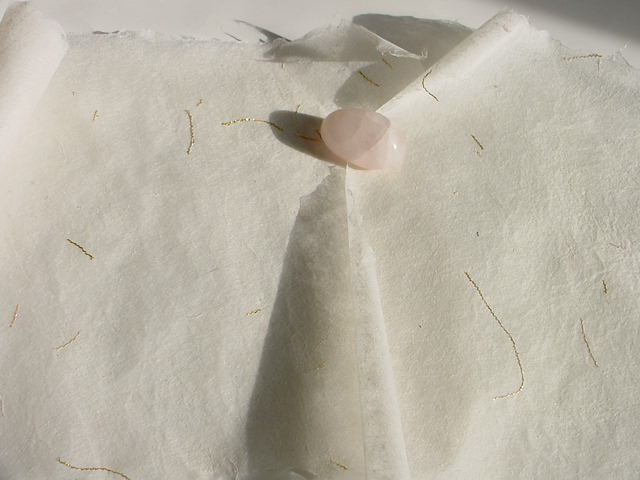TAGS: Kozo Paper, Kozo Features, Jon Cone, Japanese Paper

Warmth.
Literally warmer to the touch than Western papers made of woodpulp, washi
feels soft and creates a feeling of warmth in the viewer. Its tactile qualities make it
wonderful.
Body.
Since the fibers are left long and pounded and stretched rather than chopped, kozo
papers have a deceptive strength. Pure-fibred papers can even be sewn and was used for
armour and kimono-lining in earlier times.
Strength.
The length of the fibers and the nature of the raw materials ensure that kozo
paper is highly workable when wet. Thus it is excellent for papier maché, and etching in
which the paper must be soaked. These long fibers produce a luxurious deckle edge, the
rough edge that marks a handmade paper.
Soft translucency.
Kozo naturally translucent fibers, a quality specific to paper from the
East. As such, it is used regularly for the transmission of light.
Absorbency.
The nature of the fibers creates a ready absorption of inks and dyes. Papers
that are "pure fibred" and dyed will result in much denser and more vibrant color when
fabric or watercolor dyes are applied.
Flexibility.
Since the fibers position themselves at random, it gives the paper a resistance to
creasing, wrinkling and tearing - and means it can be used more like cloth, for covering
books, or boxes etc.
Lightness.
This paper weighs much less than other papers of equal thickness. As a paper
for books, it can create texts of apparent weightlessness.
Low acidity.
Traditionally made Japanese papers are truly acid-free if they are unbleached
and unsized. Examples of printed papers exist in perfect condition in Japan from 1000
years ago. Today, papers from the village of Kurotani are among the finest archival papers.
"Things of excellence shall not die."
